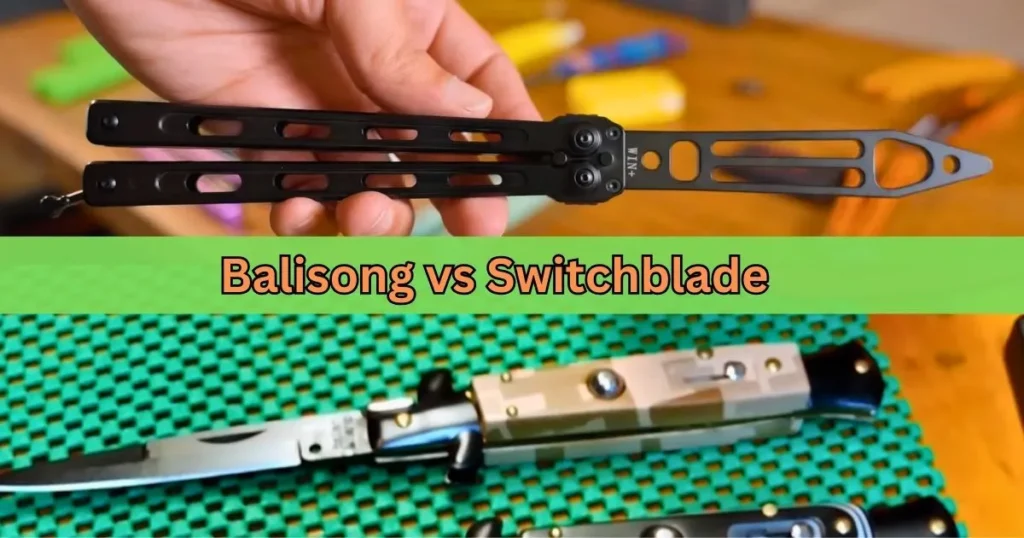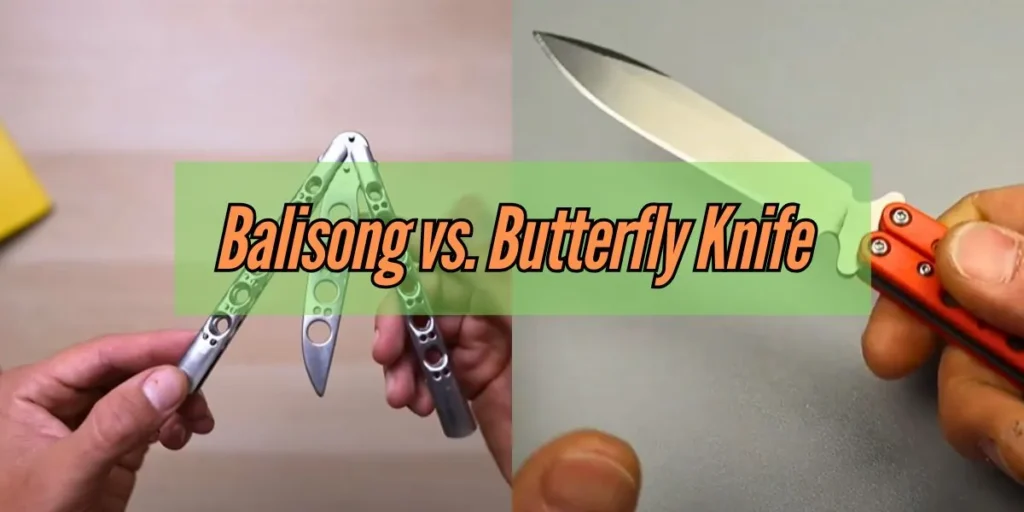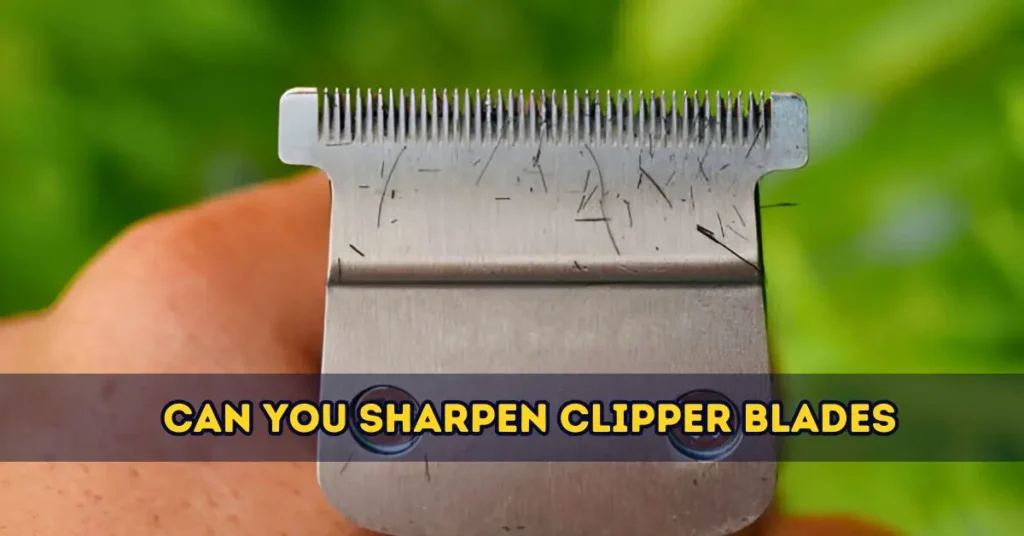Can You Sharpen a Ceramic Knife with a Regular Sharpener?
Table of Contents
ToggleDo you need help sharpen your ceramic knife with a regular sharpener? You’re not alone. Ceramic knives are lightweight, durable, and have a reputation for higher edge retention. But how to sharpen these trusty tools often leaves many cooks scratching their heads.

This post will cover what makes ceramic knives unique, why traditional sharpeners can’t handle them, and the best techniques and tools for keeping the razor edge intact. We will discuss the use of diamond-coated sharpeners, ceramic whetstones, and other specialized tools, as well as the proper sharpening techniques to ensure the longevity and performance of your ceramic knives. Here are the tips to keep your ceramic blades working correctly!
Understanding To Sharpen a Ceramic Knife

What Are Sharpen a Ceramic Knife?
Ceramic knives are made from zirconium dioxide or zirconia. This hard-as-nails material—second only to diamonds on the Mohs scale of hardness—makes ceramic knives incredibly good at holding a sharp edge for a long time, a quality known as edge retention.
This means that the sharpness of a ceramic knife’s edge is maintained significantly longer than that of a steel knife. Compared to conventional steel knives, ceramic knives are considerably lighter, making them easier to use for extended periods.
They are also rust-proof simply because they don’t have any metal that can rust with time and do not lose their sharpness quickly; thus, they need less frequent sharpening. Also, ceramic blades are non-reactive, so they don’t influence the taste or smell of foods, which is excellent for preparing sensitive ingredients, such as fruits and vegetables.
Benefits of Ceramic Knives
One of the critical qualities of ceramic knives is their edge, which they can maintain throughout their lifespan. Ceramic blades retain their razor sharpness for much longer than their steel peers, allowing for less frequent sharpening and more precise-guided cuts without strain.
Furthermore, hardness provides perfect conditions for thin slices and clean cuts while working with veggies or fruits and ensures consistent top-notch results. Furthermore, ceramic knives’ properties also include being lightweight and ergonomic. Due to their feather-light design, long culinary sessions do not strain the arms.
Whether it is dicing a box of fruits or veggies, these tools will not let down their efficiency and guarantee the comfort of repetitive tasks. The blades are also non-reactive to rust and corrosion, making them comfortable in humid areas.
The former factors are common in a home kitchen due to water exposure and when acting with wet or acidic items. Stain and odor resistance and easy-to-clean surfaces ensure durability and comfort. These attributes compose a versatile, valuable set of products a cook should have.
Challenges of Maintaining Ceramic Knives
Ceramic knives have distinct advantages, but they require special treatment. Their unique selling point is that they are much sharper and more durable than steel knives. On the other hand, ceramic retains its edge much longer, which is perfect for kitchen precision.
But that hardness also makes them brittle—at risk of chipping, cracking, or recoiling if dropped or whacked against hard surfaces such as bones or frozen foods. This shows that they have to be handled with care.
The sharpening of ceramic knives is also unlike steel. Ordinary sharpeners can ruin them or, at the very least, create a need for a diamond-coated sharpener or a visit to the professionals. The addition of a complexity that some may find annoying, mainly if used to the almost no-maintenance nature of steel knives.
Ceramic knives are a significant investment that requires proper care and maintenance. While they may require more attention than steel knives, the results in terms of precision and lasting sharpness are unparalleled.
By investing time and care into your ceramic knives, you can ensure they remain a reliable and sophisticated addition to your kitchen, providing consistent top-notch results.
How Sharpener Compatibility Affects Ceramic Knives

What is a Regular Sharpener?
Regular sharpeners comprise manual pull-through sharpeners, basic whetstones for steel knives (not ceramic knives), honing rods, and electric sharpeners. These are best for maintaining and refreshing the edges of softer steel blades, which are standard in kitchen knives. However, they are only appropriate for some complicated materials such as ceramics. They’re for softer materials and lack enough abrasiveness and durability to properly sharpen ceramic knives, which need specialized tools, given ceramic’s unique hardness and brittleness.
Why Regular Sharpeners Don’t Work Well on Ceramic Knives
Standard sharpeners aren’t designed to accommodate the extra hardness of ceramic blades, so they don’t effectively restore the sharp edge required for precise cutting. Using these tools does not adequately sharpen this kitchen knife, dulls over time, and loses its performance as an essential kitchen tool.
The greater risk is damage from improper sharpening. Ceramic blades are not as sturdy, and using the incorrect tools can lead to misalignment and chipping—or, in some cases, further dulling. These issues can affect the knife’s usability and render it non-functional. Repairs can be expensive, and replacement is often the only option. This underlines the importance of using the right tools for sharpening ceramic knives.
Ceramic knives are prized for their durability, but improper sharpening can degrade this advantage. The proper tools will ensure that they live on much longer and maintain their longevity, performance, and worth. You can get the most out of your investment in these specialized kitchen tools with the proper care.
The Right Tools for Sharpen a Ceramic Knife

Then, to maintain the quality of your ceramic knives and their function over the long haul, you need to pursue special tools to protect your cookware. Unlike traditional steel knives, ceramic blades (the main body of most modern knives) need careful handling and specific sharpening and maintenance items so they do not get chipped or damaged. With proper maintenance, they are guaranteed to stay a reliable tool in your kitchen for years to come.
Diamond-Coated Sharpen a Ceramic Knife
The best tools for precisely this purpose are diamond-coated sharpeners, which are durable and provide exact sharpening for ceramic knives. Ceramic knives—as you might guess—are made of zirconia, which is very hard, even more than steel, and can take the sharpest edge possible but is very difficult to sharpen with regular tools.
Diamond-coated sharpeners are hard enough to grind away at the dense zirconia material without appreciably damaging the blade. They do not come in metal on metal, so they make accurate sharpening, ensuring that the knife’s edge remains intact and sharp for a long time. Whether you’re an amateur home cook or a professional, these sharpeners keep your ceramic knives performing well and lasting longer.
Whetstones and Sharpen a Ceramic Knife
While diamond sharpeners sharpen knives, ceramic whetstones are most suitable for keeping ceramic blades sharp. These whetstones will get things sharp again and do so while respecting the integrity of the blade.
Fine to ultra-fine grits are ideal for ceramic knives. They enable precise sharpening with less risk of chips or cracks. They also have a smoother finish, adding durability and cutting precision. Selecting the proper grit makes your knife work optimally.
Excellent, but sharpeners work on whetstones, requiring slightly more skill and practice. If you’re willing to learn, however, these products are a great option. You need the proper technique and angle for good results, and that extra effort results in a sharper, longer-lasting ceramic blade.
Electric vs. Manual Sharpening Systems
- Electric Sharpener: These power tools work quickly and are more convenient, so they’re great for the person who wants efficiency. However, it’s important to ensure the sharpener is specifically designed for ceramic knives, as using an incompatible device could damage the blade.
- Pointing: Manual Sharpeners give you more control; you can adjust the angle and pressure to improve your pencil tips. However, they demand work and a steady hand to maintain the proper sharpening angle, which may take some practice to get right.
Honing Rods and Their Role
A honing rod may be mistaken for a sharpener, but it serves different purposes. Instead of grinding away material to sharpen a blade, honing rods reposition the edge of a steel blade to ensure it stays straight so it performs better for longer.
They’re perfect for keeping the edge on steel knives when not sharpened. But they don’t work on ceramic knives since ceramic blades need to be cared for differently because of their hardness and brittleness. This distinction can help you prolong the life and functionality of your kitchen tools.
Step-by-Step Guide: How to Sharpen a Ceramic Knife

Sharpening a ceramic knife requires precision and care as ceramic is more complex to implement and is more brittle than steel. You will want the right tools and techniques to keep them sharp and not damage them. Here’s a step-by-step guide to keeping your knife in tip-top shape.
Step 1: Identify the Condition of the BladeStep
Look for dullness, chips, and cracks along the blade. A knife that does not cut cleanly has visible nicks or shows any damage, so it may be less valuable and unsafe to use. If the damage is really bad, it may be time to get the blade professionally sharpened or replaced.
Step 2: Pick the Appropriate Tool for Sharpening
Use a diamond-coated, high-end sharpener or a ceramic-oriented whetstone. These utensils feature harsh blades; you’ll need special tools to concatenate them without damage. Just ensure the tool is explicitly ceramic-specific so you know it will deliver the consistent level of precision and durability required to maintain your blade’s edge effectively.
Step 3: Get the Sharpening Equipment Ready
If you’re using a whetstone, soak it in water for 5–10 minutes to allow it to saturate thoroughly before use. This generates the proper amount of lubrication for sharpening while also keeping the stone from drying out as you go.
Wash your knife well to remove debris, dirt, and oil. This prepares the blade for sharpening and prevents particles from damaging the whetstone surface.
Step 4: Sharpening the Blade
- Whetstones: Set the whetstone down on a non-slip, stable surface and lubricate it with water or oil according to the type of stone. Keep the knife angled between 15 and 20 degrees and apply smooth, steady pressure as you push the knife against the whetstone from the base of the blade to the tip. Carefully hold it at an angle and sharpen one side of the blade until it’s sharp, then do the same on the other side. Ultimately, refine the edge with fainter strokes for a smooth finish.
- For Diamond Sharpeners: Position the diamond sharpener on a flat surface or grip it firmly. Follow the manufacturer’s instructions closely, allowing the blade to ride into the sharpener at the proper angle. Usually, you’ll want to run it several times on either side of the blade, applying even pressure and speed. Diamond sharpeners work more quickly than whetstones, so check the blade frequently to avoid over-sharpening.
Step 5: Post-Sharpening Care
- Clean the knife to remove residue, and rinse.
- I am testing sharpness by cutting through a piece of paper or a tomato.
- Store safely in a knife block or on a magnetic strip to help protect the blade.
DIY Alternatives for Sharpen a Ceramic Knife
Using a Regular Sharpener on Ceramic Knives
Typical sharpeners pose a severe danger and are usually ineffective because when you use them, they can easily ruin the fine edge of your ceramic knife. A specialized sharpener for ceramic blades (which have different hardness and are made differently) is needed. Preventing it from wear and tear in the long run is always to invest in proper tools to keep the blade sharp and help it last longer, saving you time and money.
When Should You Seek Professional Sharpening?
If your knife shows extensive damage—such as chips, cracks, or even a broken tip—it’s best to consult a professional specializing in ceramic knives. Attempting to repair significant damage on your own can worsen the issue or render the knife unusable. A professional will have the proper tools and expertise to restore your knife safely and effectively, ensuring it remains functional for the long term.
Maintenance Tips to Prolong Your Sharpen a Ceramic Knife

Proper Knife Usage
- Avoid cutting through hard materials like bones or frozen foods—they’re tough on your knife.
- Use a cutting board made from gentle materials like wood or plastic to keep your knife in great shape.
Storing Your Ceramic Knife
Store your knife in a protective sheath, knife block, or magnetic strip to keep the blade sharp and prevent damage. Avoid tossing it into a drawer with other utensils, as this can dull the edge or cause chips in the blade over time. Proper storage not only extends the life of your knife but also helps prevent accidental cuts when reaching for other items.
Routine Maintenance
- Always wash your knife with warm, soapy water and a soft sponge. Avoid dishwashers, as the high-pressure water and harsh detergents can weaken the blade over time and cause chipping.
- Use a ceramic honing rod or tool for light honing to keep your knife sharp between sharpening sessions. This helps realign the blade’s edge, maintaining its sharpness and making it easier to cut efficiently.
What to Avoid
- Please don’t attempt to pry, twist, or use your ceramic knife for tasks it wasn’t designed for, as this can damage the blade or compromise its integrity over time.
- Avoid dropping the knife onto hard surfaces. Doing so can cause chips, cracks, or even breaks in the blade, reducing its lifespan and effectiveness.
FAQs
No, regular sharpeners are not designed for the hardness of ceramic. Use diamond-coated sharpeners or ceramic-specific tools instead.
Depending on usage, ceramic knives typically need sharpening every 6–12 months.
No, steel sharpeners are ineffective on ceramic and may damage the blade.
Diamond-coated sharpeners or ceramic-specific whetstones are the best options.
Chips can sometimes be repaired by professionals using specialized tools.
Why the Right Sharpener Matters
Maintaining a ceramic knife’s sharpness requires precision, patience, and the right equipment. While regular sharpeners fall short, tools like diamond-coated sharpeners and ceramic whetstones rise to the challenge. Invest in these specialized tools to enjoy the long-lasting benefits of your ceramic knife.
If you’re unsure about sharpening your knife, consider professional services to restore its blade to its original brilliance. Your ceramic knives deserve the best care—take the first step today and equip your kitchen with the necessary tools!
Conclusion
Ceramic knives are a popular choice for their ultra-sharp blades and lightweight design. Regular sharpening is necessary to keep them functioning at their best. By following the proper sharpening techniques and utilizing the right tools, you can maintain your ceramic knife’s sharpness for long-lasting use.
Remember to practice good knife usage habits, store your knives correctly, and perform routine maintenance to ensure they remain in excellent shape. With these tips and tricks, you can easily take on any culinary task using your trusty ceramic knife!
Happy cooking! —The Knife Experts
Related Posts
-
 20 Dec 2024 KnifeHow to Date Imperial Knives: A Collector’s Guide
20 Dec 2024 KnifeHow to Date Imperial Knives: A Collector’s Guide -
 17 Dec 2024 KnifeThe Ultimate Guide on How to Date Buck Knives
17 Dec 2024 KnifeThe Ultimate Guide on How to Date Buck Knives -
 17 Dec 2024 KnifeHow Old Is My Buck Knife? A Comprehensive Guide
17 Dec 2024 KnifeHow Old Is My Buck Knife? A Comprehensive Guide -
 16 Dec 2024 KnifeBalisong vs Switchblade: Which Knife Suits Your Needs Best?
16 Dec 2024 KnifeBalisong vs Switchblade: Which Knife Suits Your Needs Best? -
 16 Dec 2024 KnifeBalisong vs Butterfly Knife: What’s the Real Difference?
16 Dec 2024 KnifeBalisong vs Butterfly Knife: What’s the Real Difference? -
 13 Dec 2024 KnifeCan You Sharpen Clipper Blades? A Complete Guide
13 Dec 2024 KnifeCan You Sharpen Clipper Blades? A Complete Guide -
 12 Dec 2024 KnifeCan You Ship Knives Through USPS? A Comprehensive Guide
12 Dec 2024 KnifeCan You Ship Knives Through USPS? A Comprehensive Guide -
 10 Dec 2024 KnifeWhat Grit Whetstone for Kitchen Knives? Expert Tips Inside!
10 Dec 2024 KnifeWhat Grit Whetstone for Kitchen Knives? Expert Tips Inside! -
 07 Dec 2024 KnifeHow Long Can a Kitchen Knife Be Wet? A Practical Guide
07 Dec 2024 KnifeHow Long Can a Kitchen Knife Be Wet? A Practical Guide -
 05 Dec 2024 KnifeHow to Sharpen a Sickle Like a Pro: Expert Tips
05 Dec 2024 KnifeHow to Sharpen a Sickle Like a Pro: Expert Tips














